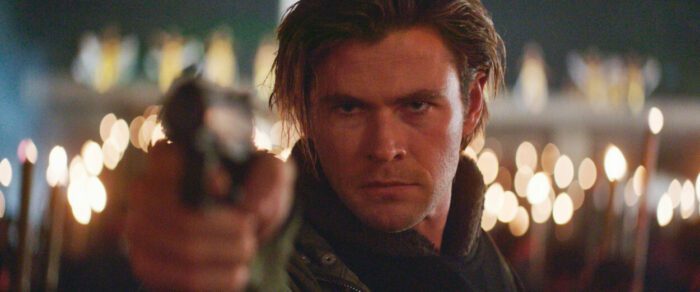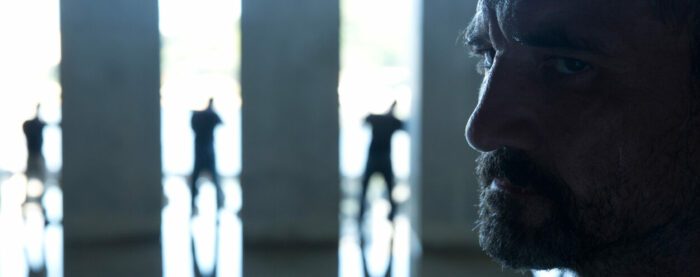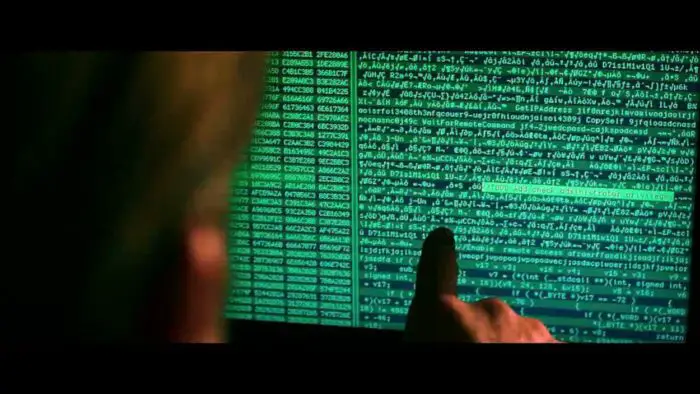Welcome to this column dedicated to my appreciation of physical media supplements called Feature Presentations. The goal of this column is not to say whether a film is good or bad and worth picking up or not- I would like to highlight the discs that go the extra mile and provide film fans with enough tasty tidbits to satisfy even the hungriest of cinephiles. Today’s article will focus on Blackhat from Arrow Video.

I never have or will claim to be an expert in reviewing the technical specs of a physical media release. There are plenty of knowledgeable people in this realm of commenting on the audio and video aspects of a disc with better setups than I’ll ever own. This column, Feature Presentations, is a way of highlighting the supplemental material within a given disc. With all that out of the way, let’s get to the good stuff and dive into my review of Blackhat.
As a disclaimer of transparency for this episode of Feature Presentations, my review of Blackhat comes from a review copy that MVD Entertainment provided for review. All thoughts and opinions are my own.
There’s no doubt that Michael Mann is one of the finest technical directors currently in Hollywood. His strive for perfection and precision have helped make films such as Thief, Heat, and The Insider some of the best films of the past 40 years. At the same time, when the filmmaker misses the mark, it doesn’t go unnoticed.
The 21st Century has not treated Michael Mann as well as his earlier works. Whether it be the overstuffed Ali, the grim Miami Vice, and the underwhelming Public Enemies, outside of 2004’s Collateral, for whatever reason, his recent output hasn’t clicked as well as those entries from his earlier filmography. And unfortunately, this disappointment translated to 2015’s cyber-thriller and today’s topic: Blackhat.
Chris Hemsworth plays Nick Hathaway, a computer hacker released from prison to assist the FBI and Chinese government after a series of global hacks. Teaming up with various agents, Hathaway and his team traverse the world, attempting to stop the cyber-terrorist while avoiding fist fights, gun fights, and a love story that doesn’t fit.
All the elements are there for a terrific and taut Michael Mann thriller, but none comes together as it should. Chris Hemsworth is woefully miscast, in the same way, that Mark Ruffalo wasn’t the right fit in Collateral. There’s no question that both actors have talent to spare, but if the director doesn’t harness them properly, all that talent goes down the drain.

The biggest drawback of the film comes from the messy and disengaged storytelling. Speaking only for myself, since the release of Collateral, the faults of Michael Mann’s most recent releases fall within the script department. In Mann’s latter-day scripts, a coldness between the characters and the audience exists, keeping the viewers at a distance. As such, it makes it more difficult to find myself invested in the character’s goals. It’s a tricky balance to pull off characters as Mann presents in Blackhat, a trick I feel the film doesn’t quite accomplish.
While I have been overall negative with my feelings on Blackhat, there are positives and not an overall disappointment. Speaking on a technical level, Blackhat is as good as one might imagine. As with his previous joints, no one shoots a city at night like Michael Mann. The look of Blackhat is on point for a Michael Mann film, showcasing that the director has not lost a step in shooting his projects. Similar to his later output, beginning with Collateral, Mann employs many different aspects to give Blackhat a pristine look, including immersive photography work utilizing various camera work, all shot digitally.
And the same goes for the audio portions of the film. While not as action-packed as Heat or Public Enemies, when the kinetic elements of the film kick in, Michael Mann continues to remind everyone that he kicks as much ass in the audio and visual department now as he has done in the past.
Getting into the disc, Arrow Video released Blackhat in a two-disc, 4k UHD/Blu-ray edition. The disc provided by MVD Entertainment was only the discs, but the package includes a slipcover with newly-commissioned artwork and an essay booklet featuring writing from Andrew Graves.
Kicking off the supplemental material is a feature-length audio commentary with critics Bryan Reesman and Max Evry. I’m not sure why this commentary track is on this disc. Almost from the get-go, it’s clear that neither contributor views the film in the warmest regard, even though both men mention multiple times that they like Blackhat overall. While there have been tracks where the participants are not fans of the subject they are discussing, they at least come to the conversation with analysis and opinions that offer insight from a different point of view.
Instead, both critics offer a conversation, playing like reading through a Wikipedia article. Reesman makes more effort to inject the discussion with analytical pieces and production information that ties into the film. On the other hand, Evry makes occasional jokes at the film’s expense and seems more disconnected from Blackhat than Reesman. Eventually, the track gets to the point where both contributors start reading reviews verbatim from other movie critics about Blackhat. There’s information dispensed here and there, but you could read a handful of articles on Blackhat and probably come away with almost the same amount of information as you would with this audio commentary.

Moving on to a better feature, “Firewall” is a newly filmed 18-minute video interview with cinematographer Stuart Dryburgh. Dryburgh begins the discussion with his early career, how he hooked up in a working relationship with Jane Campion, and The Piano punching his ticket out of New Zealand and into Hollywood productions. He then gets into how filming episodes of the TV show Luck allowed him the opportunity to head DP work in Blackhat before getting into the work that went into the 2015 film production. Dryburgh gets into the nuts-and-bolts of the cinematography requirements asked by Mann and, while occasionally technical, “Firewall” is an entertaining chat that focuses on one of the film’s strengths.
Even better, “Zero Day Threat” is a 30-minute video interview with production designer Guy Hendrix Dyas. Dyas discusses his career and how he came from England, not wanting to be a farmer, and making his way through different design aspects before finding his calling by working in feature films. From here, Dyas discusses the challenges of working on Blackhat, including Michael Mann’s stress of realism, working on locations, and finding unique and intriguing locales for the film’s production. Between “Zero Day Threat” and “Firewall,” Arrow Video did an excellent, one-two punch for behind-the-scenes interviews.
Up next are three archival featurettes from the prior Blu-ray release: “The Cyber Threat,” “On Location Around the World,” and “Creating Reality.” Each featurette runs for a few minutes and offers glimpses into the hacker world on “The Cyber Threat,” the various international locations featured throughout Blackhat for “On Location,” and working on set with Michael Mann with “Creating Reality.” None of these making-of features are in-depth, but they offer plenty of behind-the-scenes information and the only comments from Michael Mann, the cast, and some of the crew. Most interesting is “Creating Reality” as Mann gets the spotlight and the cast, including Chris Hemsworth and Viola Davis, discuss the director’s reputation and method for requiring many takes from his actors.
The most important inclusion on this disc is having the director’s cut on Blu-ray. Unlike other so-called director’s cuts, generated for additional physical media sales, the Michael Mann cut for Blackhat restores the vision the director initially had and improves the pacing and logistics for the finished product. With that, most of the changes are minor; the most significant change is moving the nuclear plant explosion to the middle of the movie. The director’s cut is preferred, with a better edit and logical pacing, but if you weren’t a fan of the theatrical cut, this director’s edit might only move your enjoyment needle slightly. Arrow Video also includes an International Cut, which looks identical to the theatrical version except for one edited scene.
The disc closes out with a short image gallery of behind-the-scenes shots and images from the final film.

And there you have it! Upon revisiting Michael Mann’s Blackhat, I walked away with the same feelings I did in 2015: it looks great, but it’s a mess. Now that I’ve seen the director’s cut, my feelings have improved slightly, but no matter the cut, it has never completely worked for me. As it seems like Michael Mann and his cast have washed themselves of Blackhat, I can’t see another edition of this film hitting shelves. While light on overall features, having two new thorough interviews and the director’s cut on disc is beyond enough reason for Blackhat fans or Michael Mann completionists to own this edition.



